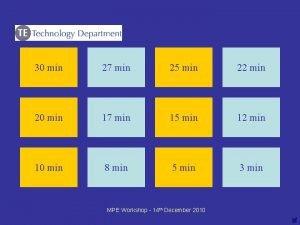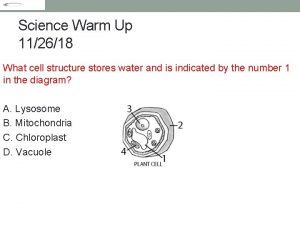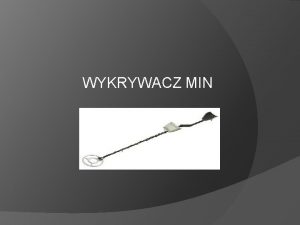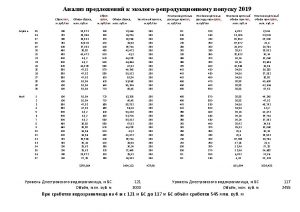Warm Up 4 min 112618 Monday When you







- Slides: 7

Warm Up 4 min 11/26/18 Monday • When you look through a microscope at a drop of pond water, you can discover some amazing living things. The paramecium that looks so large in the photograph is only a fraction of a millimeter in length. • 1) How many cells make up the paramecium? • Answer; One

Today Agenda 1) Warm up 4 min 2) Lesson Outline (Lesson 1 Protists 10 min) 3) Video (Brain Pop) Protists (5 min) 4) Plicker 10 questions (Independent Practice) 25 min • Reminder • 1) No homework this week due to STEM FAIR STEP 5 Analyze Data • 2) STEM FAIR STEP 5 due is 11/30/18 (Friday) • 3) STEM FAIR STEP 6 Display Board Presentation and Abstract (12/3/1812/7/18) Friday is the last day for the Display Board. • • • Top 10 project between (final score) at 7 th grade will go to School Level Stem Fair 12/12/18 3 pm-5 pm at main campus.

Lesson Outline for Lesson 1: What are protists? A. What are protists? 1. Organisms can be classified by the structures in their cells. 2. A(n) protist is a member of a group of eukaryotic organisms. Eukaryotic cells all have a(n) membrane-bound nucleus. 3. Most protists reproduce through asexual reproduction. That means the offspring are a(n) exact copy of the parent. 4. Protists are very diverse and have a variety of adaptations for movement and finding food. They often resemble other types of organisms. B. Plantlike Protists 1. Algae are plantlike protists that use light energy and carbon dioxide. They produce food through a process called photosynthesis. 2. A(n) diatom is a microscopic plantlike protist that has a hard outer wall. 3. A dinoflagellate is a unicellular plantlike protist that has flagella, which are whiplike parts that enable it to move. 4. A(n) euglenoid is a unicellular plantlike protist that has a flagellum at one end of its body. It has no cell wall. 5. Algae are classified as red, green, or brown, depending on the pigments they contain. Although they resemble plants, algae have holdfasts rather than roots.

C. The Importance of Algae 1. Algae provide food for animals and animal-like protists. 2. Kelp forests provide shelter for small organisms that become food for otters and seals. 3. Algae can be toxic when they reproduce quickly in a(n) algal bloom. D. Animal-like Protists 1. Protozoans are protists that resemble tiny animals. They are usually microscopic, and all are unicellular. 2. A(n) paramecium is a protist with cilia and two nuclei. 3. Flagellates are a type of protozoa that have flagella similar to those of dinoflagellates. 4. An amoeba is a(n) sarcodine, a protist that has no specific shape. 5. An amoeba moves and eats with a(n) pseudopod. It pushes part of its body outward to form a(n) temporary “foot. ”

E. The Importance of Protozoans 1. Many protozoans decompose dead animals and plants. 2. Some protozoans are parasites that cause disease. Malaria is a serious illness caused by protozoan plasmodia. F. Funguslike Protists 1. The body of a(n) slime mold is composed of cell material and nuclei floating in a slimy mass. 2. Water molds are funguslike protists that live as parasites, or feed on dead organisms. G. Importance of Funguslike Protists 1. Funguslike protists play a valuable role in the ecosystem by breaking down dead animal matter and plant matter. They help make nutrients available for other living things. 2. Water mold destroyed more than half of Ireland’s potato crop.

Video (Brain Pop ) Protist 2 min • Pay attention to video please there will be 10 question about the video and lesson outline.

Plicker (Independent Practice) 25 min • 10 questions.













